Your Ultimate Jaipur Travel Guide: Exploring the Pink City’s Wonders & Planning Your Visit
Imagine wandering through a city where every corner seems to glow in warm shades of terracotta, where centuries-old palaces whisper secrets of royal grandeur, and vibrant bazaars invite you to explore a kaleidoscope of colors, aromas, and textures. Welcome to Jaipur, the enthralling capital of Rajasthan and the city famously known as the Pink City. In this guide, we’ll take you on an immersive journey through Jaipur’s illustrious heritage, architectural wonders, flavorful cuisine, and practical travel tips to ensure you experience its magic to the fullest.
Introduction: A City That Beckons With Royal Charm
Stepping into Jaipur is like opening the pages of a living history book. Founded in 1727 by Maharaja Sawai Jai Singh II, Jaipur is renowned for its visionary urban planning, rich cultural tapestry, and an unmistakable pink hue that has come to define its identity. As you meander through the bustling streets, the city’s blend of regal heritage and contemporary flair reveals itself at every turn—whether you’re admiring centuries-old forts, savoring delectable Rajasthani cuisine, or simply soaking in the vibrant atmosphere of its bustling markets.
This detailed guide aims to answer all those burning questions that internet searches frequently raise: Why is Jaipur called the Pink City? What to see in Jaipur? How is the weather, and what is the best time to visit? Plus, we delve into practical travel tips and insider experiences to help you plan an unforgettable adventure in this enchanting destination.
Let’s begin our journey through Jaipur, a city where history, culture, and modern vibrancy come together in an unforgettable way.
Why Is Jaipur Called the Pink City? The Royal Welcome
A Historical Gesture of Hospitality
One of the most captivating aspects of Jaipur is its iconic pink hue. But why is Jaipur called the Pink City? The story dates back to 1876 when Maharaja Sawai Ram Singh I decided to prepare his city for the visit of Prince Albert Edward, the Prince of Wales. In an extraordinary gesture of hospitality, the entire city was painted a warm terracotta pink—a color traditionally associated with welcoming and warmth in India. This bold transformation left such an impression on the visiting dignitary that the nickname “Pink City” stuck over the years.
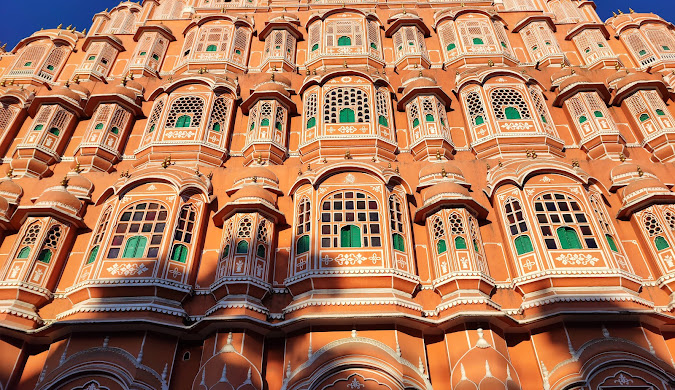
The Visual Impact of Pink
Today, the terracotta facades of Jaipur’s historic buildings continue to narrate this tale. Walking through the Old City, you witness an uninterrupted cascade of pink hues that not only serve as a visual delight but also carry a profound historical significance. The consistent color scheme, maintained by successive generations through municipal regulations, reinforces the city’s identity, making it instantly recognizable and deeply evocative of its regal past.
Keywords integrated: why jaipur is called pink city, jaipur
What Is Jaipur Famous For? Beyond the Pink Walls
Architectural Marvels
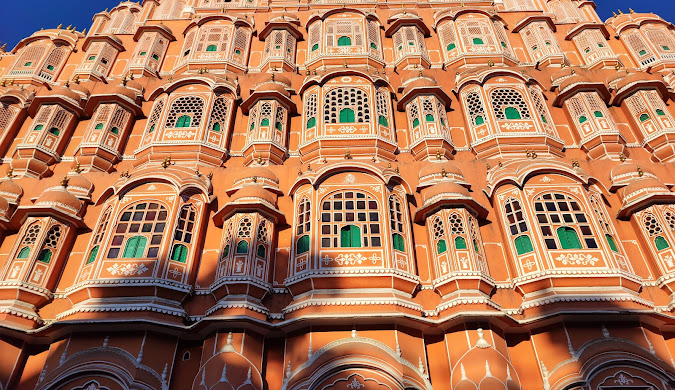
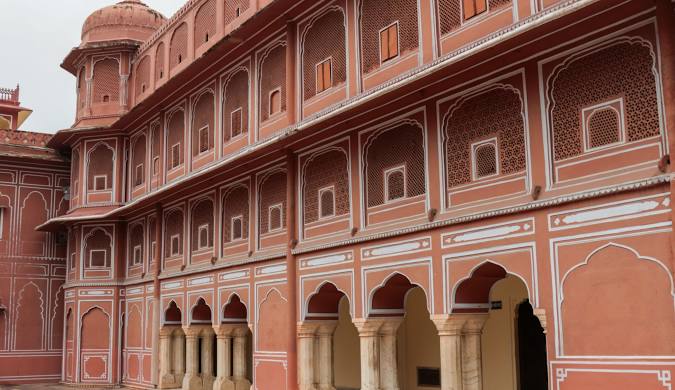
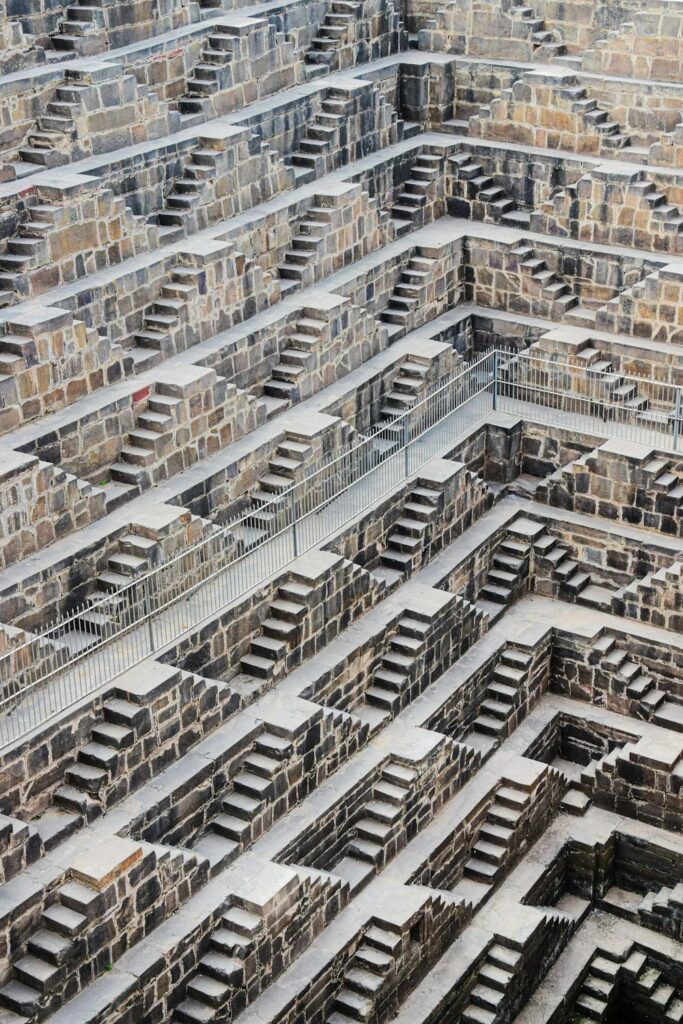
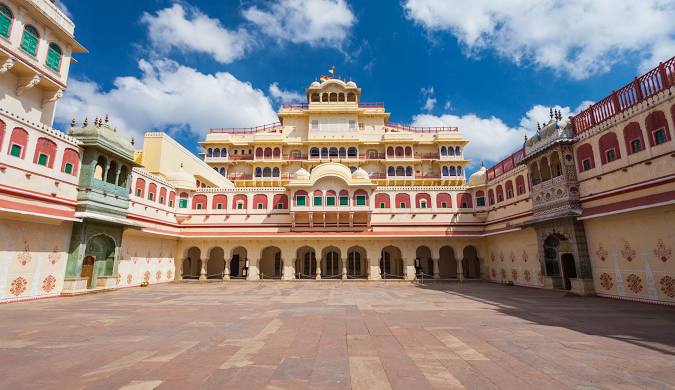
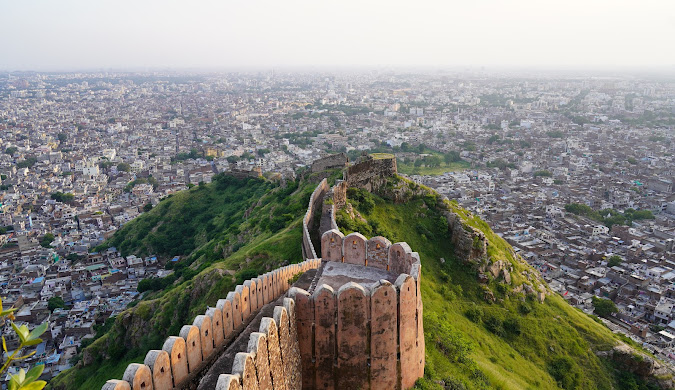
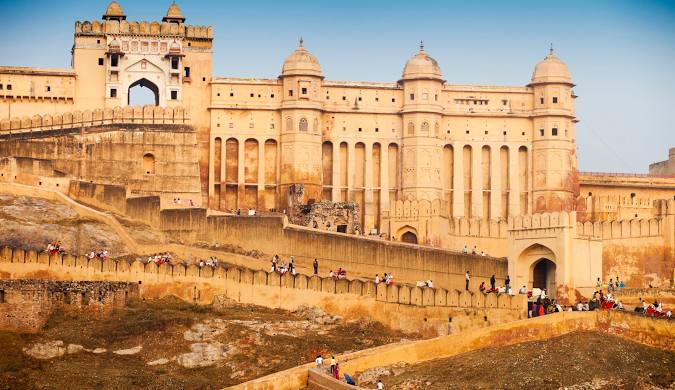
Jaipur is famous for its architectural riches that span centuries. At the heart of its fame are grand forts, royal palaces, and historical observatories that echo with the power and sophistication of its erstwhile rulers. Here are a few of the standout attractions:
- Amber Fort (Amer Fort): Situated on a rugged hillside, this magnificent citadel is a blend of Rajput and Mughal architectural styles. The expansive complex features ornate palaces, intricate carvings, and impressive ramparts that overlook the Maota Lake. Visitors are treated to panoramic views and an opportunity to step back in time through guided tours and well-choreographed sound and light shows in the evenings.
- Hawa Mahal (Palace of Winds): Known for its unique façade with 953 small windows (jharokhas), Hawa Mahal was constructed to allow royal ladies to observe street festivals and daily activities unobserved. This five-story marvel, built in the 18th century using the same red and pink sandstone that defines the city, is an architectural gem that epitomizes Jaipur’s blend of beauty and function.
- City Palace: A sprawling complex nestled in the heart of Jaipur, the City Palace is not only a museum of regal artifacts but also a living monument that continues to house the royal family. Its labyrinth of courtyards, gardens, and grand halls reflect a dazzling mix of Rajput, Mughal, and European architectural influences.
- Jantar Mantar: This monumental astronomical observatory, built by Maharaja Sawai Jai Singh II, is renowned for its collection of large-scale instruments that measure time and celestial movements with remarkable precision. As a UNESCO World Heritage Site, Jantar Mantar stands as a testament to the scientific ingenuity of its era.
- Jal Mahal (Water Palace): Perched halfway in the middle of Man Sagar Lake, Jal Mahal’s picturesque setting makes it a favorite among photographers and romantics alike. Although the palace itself is not open for internal tours, its reflection in the calm waters during sunrise or sunset is nothing short of magical.
Cultural Heritage and Traditions
Beyond its architectural splendors, Jaipur is a thriving cultural hub. The city pulses with vibrant festivals, traditional music, and dance performances that capture the essence of Rajasthani life. Whether it’s the exuberance of the Elephant Festival, the kaleidoscopic Teej Festival, or the lively Kite Festival celebrated every January, there is always a reason to revel in the local traditions.
Handicrafts and Bazaars
Jaipur’s bustling markets are a treasure trove for art lovers and collectors. The city is famous for:
- Gemstones and Jewelry: Renowned for its traditional Kundan and Meenakari jewelry, Jaipur’s craft artisans create pieces that are both intricate and timeless.
- Textiles and Block Prints: The vibrant block print fabrics from Jaipur, such as Sanganeri and Bagru prints, are celebrated worldwide for their bold designs and exquisite craftsmanship.
- Blue Pottery: A traditional craft that has evolved into a significant art form, blue pottery is one of Jaipur’s signature products.
- Local Souvenirs: From colorful lac bangles to hand-carved wooden artifacts, the markets of Johari Bazaar, Bapu Bazaar, and Tripolia Bazaar offer a rich shopping experience that feels like a journey through time.
Culinary Delights
When it comes to food, Jaipur offers a gastronomic adventure that tantalizes the taste buds with traditional Rajasthani flavors:
- Dal Baati Churma: This hearty combination of baked dough balls, spiced lentils, and a sweet crumbly dessert is the quintessential Rajasthani meal.
- Laal Maas: A fiery mutton curry known for its rich, spicy flavors.
- Ghevar: A sweet, disc-shaped dessert that is as visually appealing as it is delicious.
- Pyaaz Kachori: A savory pastry stuffed with aromatic spices and caramelized onions, perfect for a quick bite while exploring the city.
Must-See Attractions in Jaipur: A Detailed Tour
Jaipur is a city of contrasts where every monument holds a story waiting to be discovered. Here are the not-to-be-missed attractions that every visitor should add to their itinerary:
Amber Fort
Overview:
Perched on the outskirts of Jaipur, Amber Fort is one of Rajasthan’s most majestic landmarks. Constructed in the 16th century, the fort is an architectural marvel that artfully combines elements of Hindu and Mughal design.
Visitor Tips:
- Best Time to Visit: Early morning or late afternoon to enjoy the cooler temperatures and stunning views over the Maota Lake.
- Explore the Sound & Light Show: For an immersive experience, consider staying for the evening show that brings the fort’s history to life with dramatic lighting and narration.
- Modes of Transport: Options include hiring a jeep, auto-rickshaw, or even experiencing the thrill of an elephant ride up the hill.
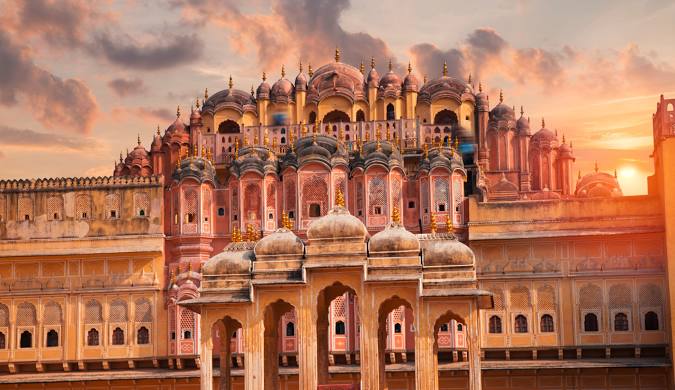
Hawa Mahal
Overview:
Famed as the “Palace of Winds,” Hawa Mahal is an architectural wonder with its delicate latticework and an array of small windows designed to catch breezes. Built in 1799, it provided the royal ladies with a discreet vantage point to observe everyday life.
Visitor Tips:
- Entry and Timing: Open daily from 9 am to 5 pm.
- Photography: Early morning light creates magical shadows on the pink façade, perfect for photography.
- Local Insight: Engage a local guide to understand the intricate details and history of the palace.
City Palace
Overview:
Located within the heart of Jaipur, the City Palace is both a museum and a residence. Its labyrinthine corridors, grand courtyards, and lavish halls offer a window into the lives of the former royals and their enduring legacy.
Visitor Tips:
- Tour Options: Hiring a guide is highly recommended to navigate the rich history and hidden nooks of the complex.
- Museums and Exhibits: Don’t miss the Maharaja Sawai Man Singh II Museum housed within the palace, which displays royal artifacts, paintings, and armory.
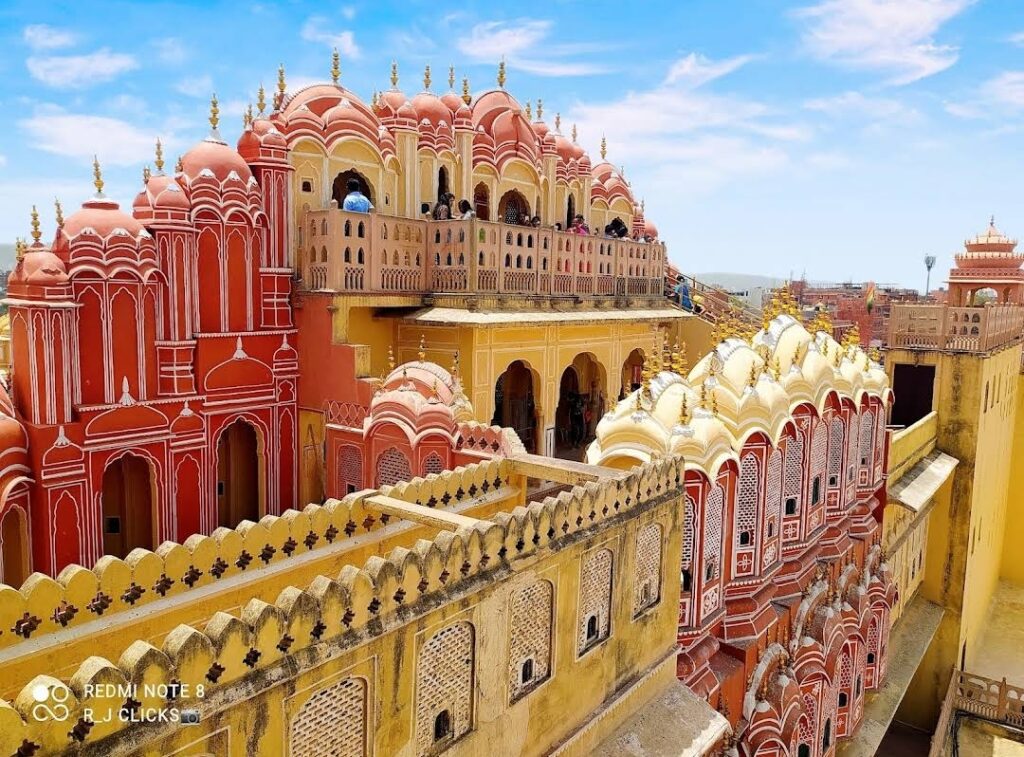
Jantar Mantar
Overview:
A marvel of scientific innovation, Jantar Mantar is the largest stone astronomical observatory in the world. Built by Maharaja Sawai Jai Singh II, its collection of instruments offers insight into the astronomical practices of the 18th century.
Visitor Tips:
- Key Instruments: Take time to study the impressive Samrat Yantra, the gigantic sundial, which embodies the precise engineering of its era.
- Guided Tours: Consider a guided tour to fully appreciate the observatory’s history and its significance in the field of astronomy.
Jal Mahal
Overview:
The ethereal Jal Mahal, or “Water Palace,” seems to float gracefully on Man Sagar Lake. Its unique architecture and enchanting setting have made it one of Jaipur’s most photographed landmarks.
Visitor Tips:
- Viewing Points: Although internal tours are not available, the best views are from the eastern shore near the Man Sagar Dam.
- Best Time for Photos: Early morning or late afternoon when the light best captures its reflection on the water.
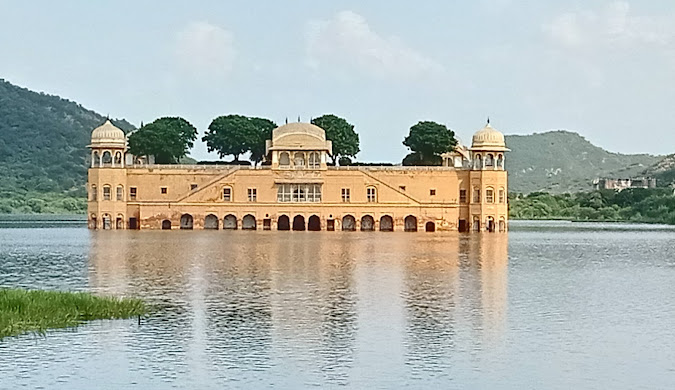
Experiences in Jaipur: More Than Just Sightseeing
Jaipur offers a wealth of experiences that go beyond visiting monuments. Here are some unique activities that add a special touch to your trip:
Aerial Adventures and Hot Air Balloon Rides
For those seeking a bird’s-eye view of the Pink City and its mesmerizing landscape, hot air balloon rides provide an unforgettable perspective. Floating gently over Jaipur’s forts, palaces, and sprawling greenery, you can marvel at the sheer scale and beauty of the city from above. (Before booking, check for current prices as these can vary.)
Hands-On Workshops and Artisanal Experiences
Immerse yourself in the local culture through:
- Block Printing Workshops: Learn the traditional techniques behind Jaipur’s famous textile prints, and create your own piece of art.
- Jewelry Making: Many local artisans offer demonstrations that showcase the craftsmanship behind iconic Jaipur jewelry.
- Cooking Classes: Discover the secrets of Rajasthani cuisine by participating in a cooking class where you learn to prepare dishes like dal baati churma and ghevar.
Exploring the Bustling Bazaars
No trip to Jaipur is complete without wandering through its vibrant markets:
- Johari Bazaar: Famous for its exquisite jewelry, this market is a must for those looking to bring home a piece of Jaipur’s regal legacy.
- Bapu Bazaar and Tripolia Bazaar: Here, you can shop for textiles, handicrafts, and locally made souvenirs. Enjoy the sensory overload of vibrant colors, intricate patterns, and the irresistible aromas of street food.
- Local Art and Handicrafts: Look out for blue pottery, traditional lac bangles, and other unique crafts that capture the essence of Jaipur’s creative soul.
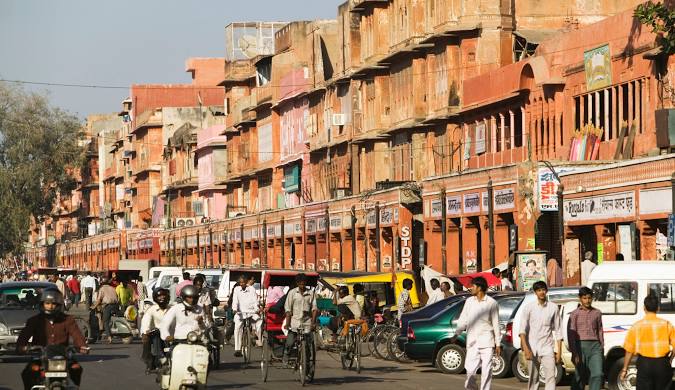
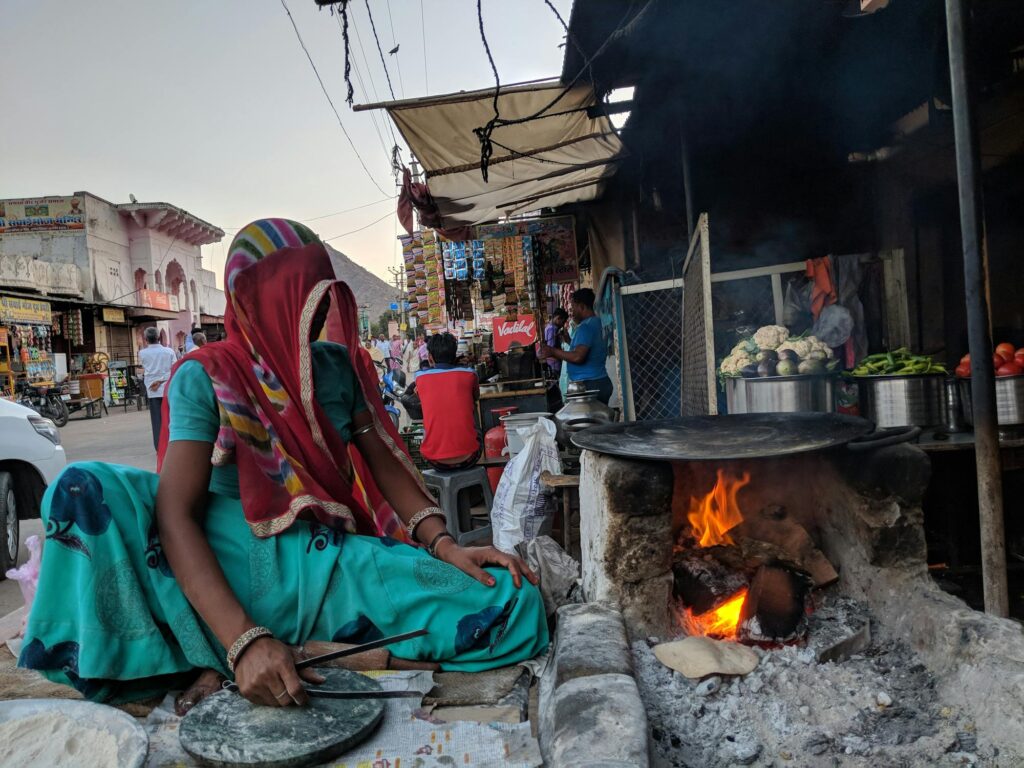
Cultural Evenings and Traditional Performances
Embrace the cultural richness of Jaipur by attending:
- Folk Dance and Music Shows: Experience the traditional music and dance performances that capture the vibrancy of Rajasthan’s heritage.
- Rajasthani Dinner Experiences: Some heritage hotels and restaurants offer themed dining experiences complete with traditional dance and music, perfect for a romantic evening or a family night out.
Romantic Jaipur and Couples’ Retreats
Jaipur is often considered a romantic destination. Its quaint cafés, serene palace gardens, and twilight tours of illuminated forts provide a magical backdrop for couples. Whether you’re on a honeymoon or planning a romantic escape, Jaipur offers a range of experiences for lovebirds—from intimate dinner settings to scenic walks through historic lanes.
Keywords integrated: is jaipur a romantic city, what can couples do in jaipur, is jaipur a honeymoon destination
Practical Travel Information: Planning Your Trip to Jaipur
Best Time to Visit Jaipur and Weather Conditions
When planning your trip, timing is everything. Jaipur best time to visit is during the cool, pleasant months from October to March. During this period, the weather jaipur experiences is mild, with daytime temperatures ranging between 8°C and 25°C, making it ideal for sightseeing and outdoor activities. The winter months, especially December through February, provide perfect conditions to explore the city without the discomfort of extreme heat.
For those on a tighter budget, the summer months (April to June) may offer lower accommodation rates despite the soaring temperatures (up to 45°C), though this is less comfortable for daytime explorations. Meanwhile, the monsoon season (July to September) brings refreshing rains that transform the city’s landscape, albeit with higher humidity and fewer crowds.
Quick Information Table
Below is a snapshot of key facts to help you plan your Jaipur adventure at a glance:
| Feature | Information |
| Location | Rajasthan, India |
| Best Time to Visit | October to March (Pleasant Weather) |
| Known For | Pink City, historic forts, royal palaces, bustling bazaars, exquisite handicrafts |
| Ideal Duration | 2-4 Days |
| Main Language | Hindi, Rajasthani (English widely understood) |
| Currency | Indian Rupee (INR) |
| Key Attractions | Amber Fort, Hawa Mahal, City Palace, Jantar Mantar, Jal Mahal |
| Famous Food | Dal Baati Churma, Laal Maas, Ghevar, Pyaaz Kachori |
Duration and Itinerary Recommendations
Most travelers find that 2 to 3 full days is sufficient to experience Jaipur’s major attractions. Here are a few itinerary suggestions:
- Day 1: Explore the heart of the Old City with visits to Hawa Mahal, City Palace, and Jantar Mantar. Enjoy an evening walk through the local bazaars.
- Day 2: Venture to the outskirts to experience Amber Fort and a hot air balloon ride for panoramic views. Conclude the day with a cultural performance.
- Day 3 (Optional): Visit Jal Mahal and spend time exploring local markets, take a hands-on workshop, or enjoy a heritage cooking class.
Getting There and Around
- Transportation Options: Jaipur is well connected by air, rail, and road. The Jaipur International Airport offers flights to major cities in India and abroad. Once in the city, a mix of auto-rickshaws, taxis, app-based services, and local buses make commuting easy.
- Local Transport: For a more authentic experience, consider hiring a cycle rickshaw or even renting a bike to explore narrow lanes and hidden gems of the city.
Accommodation Choices
Jaipur caters to all types of travelers:
- Heritage Hotels: Stay in converted palaces or havelis to immerse yourself in royal opulence.
- Budget Hotels and Hostels: Options abound for budget-conscious travelers who still wish to be at the heart of the action.
- Modern Luxury Stays: For those seeking upscale amenities and world-class service, a range of luxury hotels in Jaipur offer all the comforts and conveniences you desire.
Safety and Practical Tips
Jaipur is generally considered safe, including for solo female travelers. However, common travel precautions apply:
- Personal Safety: Be cautious with personal belongings in crowded areas, and opt for registered transport services for night travel.
- Dress Code: Respect local customs by dressing modestly, especially when visiting religious sites.
- Local Language: Hindi and Rajasthani are the primary languages spoken, though English is widely understood in tourist areas.
Costs and Budgeting
A visit to Jaipur can be tailored to suit various budgets:
- Budget Travelers: Affordable street food, budget accommodations, and low-cost public transport are easily accessible.
- Mid-Range Options: Heritage hotels and guided tours provide a balanced mix of comfort and cultural immersion.
- Luxury Travelers: High-end hotels and private tours with bespoke experiences cater to those looking for an indulgent getaway.
Frequently Asked Questions (FAQs)
To wrap up the practical side of planning your trip, here are some common questions answered:
Q: Why is Jaipur called the Pink City?
A: Jaipur earned its nickname when Maharaja Sawai Ram Singh I painted the city pink in 1876 to welcome the Prince of Wales. This warm, inviting color has since become a symbol of Jaipur’s unique identity.
Q: What is the best time to visit Jaipur?
A: The ideal period to visit is from October to March when the weather is cool and pleasant. December through February are particularly favorable for sightseeing and outdoor activities.
Q: Is Jaipur safe for solo female travelers?
A: Yes, Jaipur is generally safe; however, as with any major tourist destination, it is advised to take standard safety precautions—use reputable transport options and stay aware in crowded places.
Q: How many days do I need to truly explore Jaipur?
A: A 2 to 3-day itinerary allows you to cover the major attractions while leaving some time to discover the city’s hidden gems at a relaxed pace.
Q: What are the must-buy souvenirs in Jaipur?
A: Popular items include traditional jewelry, textiles featuring Sanganeri or Bagru prints, blue pottery, and intricately crafted handicrafts available at the local bazaars.
Q: Is Jaipur an expensive destination?
A: Jaipur caters to a wide range of budgets. While luxury experiences are available, there are plenty of affordable options for food, accommodation, and transport.
Q: Can you go inside the Jal Mahal?
A: Currently, Jal Mahal is not open for internal tours, but it is best admired from various vantage points along the lake’s edge.
A Glimpse Into Modern Jaipur: Balancing Tradition and Innovation
While Jaipur is deeply rooted in its royal and cultural past, the modern city continues to evolve. Contemporary cafes, art galleries, and boutique hotels now stand alongside historic monuments, offering a balanced perspective of the city’s dynamic identity. Modern Jaipur hosts cultural events and festivals that blend traditional art forms with modern expressions, making it a hotspot for those seeking travel blog articles inspiration and creative journeys.
Local pride is also evident in the city’s sports scene. The Jaipur Pink Panthers—a Kabaddi team known for its spirited play—represent the vibrant energy of the city and are a modern facet of Jaipur’s diverse identity, showing that while Jaipur cherishes its past, it is equally passionate about embracing the present.
Conclusion: Embark on Your Enchanting Jaipur Adventure
Jaipur is more than just the Pink City—it’s a living canvas of history, art, culture, and modernity. The city’s stunning monuments, vibrant markets, and unforgettable culinary experiences all come together to create a destination that is as enriching as it is visually captivating. Whether you’re marveling at the ancient architecture of Amber Fort, losing yourself amid the intricate designs of Hawa Mahal, or discovering the hidden narratives in the bustling bazaars, every moment in Jaipur promises a glimpse into a world where tradition meets modern vibrancy.
As you plan your trip, take note of the practical advice on the best times to visit, local transport options, and unique experiences that set Jaipur apart. Armed with this guide, you are now ready to embark on a journey that transcends time—a journey that invites you to experience the grandeur of royalty, the charm of tradition, and the allure of modern innovation.
So why wait? Start planning your own Jaipur adventure today. Whether you are a history buff, a foodie, an art lover, or an intrepid traveler on the lookout for travel blog articles inspiration, Jaipur promises an unforgettable experience that will linger in your memories long after you’ve returned home.
Citations and References
For the rich historical details, architectural insights, and practical information, this guide draws upon reputable resources such as official tourism sites, heritage conservation websites, and trusted travel blogs. Notable sources include historical overviews and architectural details from tourism.rajasthan.gov.in, Incredible India, Lonely Planet, and local Jaipur travel blogs, among others.
Enjoy your immersive journey and let the enchantment of Jaipur captivate your soul!
For more updates & articles go to: https://xploreheaven.com/blogs-updates/
